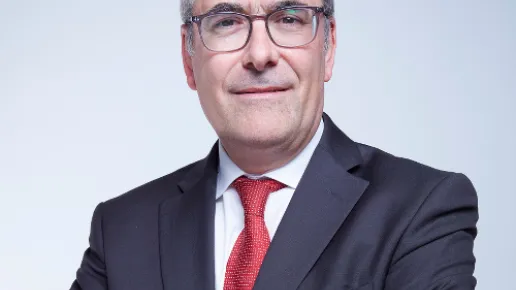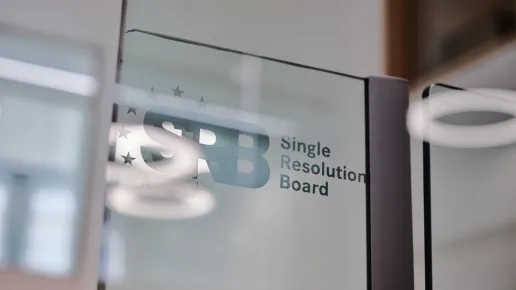The adoption of the Deposit Guarantee Scheme Directive in 2014 was an essential landmark in the setup of the Single Rulebook for the EU banking sector. While it helps to foster financial stability and reduce the risk of bank runs across the Union, it is time to update it as part of the Crisis Management Deposit Insurance review (CMDI).
With a view to protecting depositors and financial stability, Deposit Guarantee Schemes (DGS) have several functions. Their main role is to pay out depositors of failed institutions. As this is not always the most suitable solution, the regulator provides for alternative uses of DGS funds to better protect depositors and financial stability, while lowering the overall costs for the system. This option has not been transposed by all Member States, creating an uneven playing field.
The SRMR allows the Board to use the DGS funds in resolution, under certain conditions. Yet, the required least cost test (LCT), combined with the DGS’ super priority in the creditor hierarchy, significantly limits the use in resolution. Together with the access conditions to the Single Resolution Fund (SRF), this implies a hurdle to accessing external funds in resolution, hence potentially undermining the credibility and predictability of the resolution framework.
The SRB supports removing the DGS’ super priority and adopting a general depositor preference with a fully harmonised LCT; including, but also limited to relevant quantifiable costs. This can facilitate using DGS funds in resolution, as suggested by the European Banking Authority in the European Commission’s call for advice on funding in resolution and insolvency. Such a general depositor preference can ease access to funds in resolution through transfer strategies for small and medium-sized banks that would meet the public interest assessment for resolution. Here, we might also consider using DGS funds to bridge the gap until use of the SRF is possible (after bail in reaches 8% total liabilities and own funds (TLOF) for capital support).
As to preventive measures, DGS funds can be mobilised where the costs of these measures do not exceed the costs of fulfilling the DGS statutory or contractual mandate. The DGSD does not give detailed guidance on the approach to this least cost test, therefore different interpretations (including statutory or contractual mandates) give some margins of manoeuvre to the DGS. In the interest of transparency and consistency in the Banking Union, we should harmonise DGS uses.
The rules around use of DGS funds in resolution are more stringent than those outside resolution. No creditor worse off (NCWO) safeguards in the BRRD have to be respected, so that DGS funds have sound protection from losses when resolution authorities use such funds. If there is a breach of the NCWO safeguard, the resolution fund will refund the DGS funds. Such provisions do not exist for the use of preventive or alternative measures; the DGS would have to replenish its funds by raising contributions ex-post from the banks. While we support maintaining the options provided in the DSGD, we expect further work at a European level to ensure there are aligned incentives and outcomes when selecting different options.
In the CMDI review, the Commission is considering enhancing alignment of the different options and tools available; we hope that ideas in this article around DGS super priority and LCT will help in these considerations.
While work on this is an important step forward, we should not lose sight of the steady state. The European Deposit Insurance Scheme (EDIS) would replace the existing national DGS. Private risk sharing reduces financial fragmentation and helps to overcome the sovereign-bank doom-loop. In combination with the SRF, EDIS can significantly increase the firepower and agility to deal with ailing banks in a consistent manner under the second pillar of the Banking Union. As the ECB Financial Stability Review November report recalls, a number of vulnerabilities in the financial sector have intensified. Let us work together to make sure we are equipped with the best possible toolkit when these vulnerabilities materialise.
We should not stop halfway with a partial EDIS. We need to get the ball rolling in the political discussions to upgrade our crisis management framework. We now have a momentum to relaunch the discussions on completing the Banking Union and reaching an agreement on the work plan before the summer. Liquidation of banks, just like resolution, could take place at a European level. We should work towards a European FDIC model with one fund to cover depositors and/ or facilitate – under strict conditions – resolution.
In the interest of transparency and consistency in the Banking Union, we should harmonise DGS uses.
Elke König - Chair - Single Resolution Board (SRB)
Contact our communications team
Recent news

The SRB recently published two important documents clarifying its expectations of banks regarding operational resolvability: the Operational guidance...

The body responsible for managing banks in crisis in Europe is celebrating its 10th anniversary and claims that Popular's 2017 resolution has been...

In last June, Parliament and Council have clinched a political deal that is applicable to all the EU member states, and which can be seen as a step...



